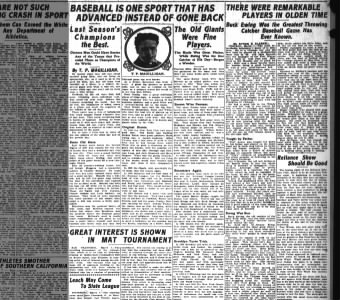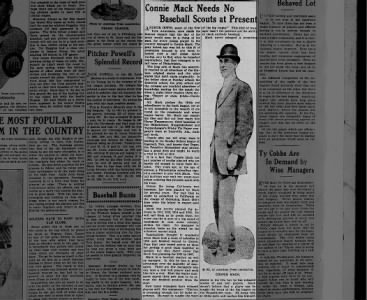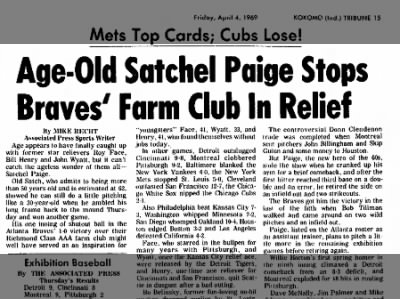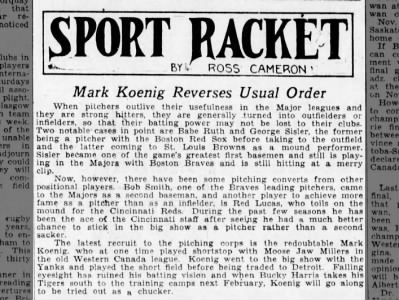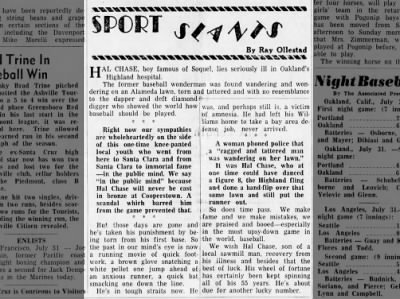Found on Newspapers.com
At some point when I have some time, I’d like to undertake some extended research here. I have this theory that for most of baseball’s history, people– fans, team management and writers parroting front office views– have complained that player salaries are too high. Whether it’s $5,000 a season or per inning, depending on the point in baseball history, it seems like someone’s always been around to decry men being remunerated for playing a game.
Bill James in at least a couple of his books has examples of this, stuff like old-timers complaining about players being around to make “a fast buck” in the 1930s. It’s nonsense, of course. Even stars like Joe DiMaggio earned maybe $25,000 a year then, equivalent to around $400,000 today. I suppose it was vastly superior to the wage of the average employee during the Great Depression, but I also doubt they generated anywhere near the revenue the Yankee Clipper did. That doesn’t mean there aren’t a lot of good stories on places like newspapers.com slamming the Yankee Clipper and other stars of baseball history every time they held out or spoke of striking. I’d like to cull some of these stories together here.
I’ll see if I can get to this research sometime this week. Voting on my project on the 25 most important people in baseball history wraps tomorrow and I know I’m going to be busy getting the November 10 results post ready. Still, research like this keeps me going. It’s fun. Also, offering original, insightful research is a core value of this site. It’s not that hard to do, anyhow. We’re in a golden age for research. More historical data and primary source material is being digitized than ever.
For now, I’ll offer a player from 1903, Tom Daly of the Cincinnati Reds who suggested players weren’t being well-paid enough. A couple of things worth noting before we get to an excerpt from the article:
- It was written in September 1903, months after the National and American leagues declared an end to the open war that had existed since the junior circuit began play in 1901.
- As the article notes, the National League in 1903 had a maximum salary for players of $2,400 per year, about $61,300 in 2013 dollars. It’s why so many players jumped their contracts and went to the American League in 1901 and 1902.
Daly was one of those players, playing with the Chicago White Sox in 1902 and 1903 before finishing the last half of the second season with the Reds. Late in the year, he gave an interview as noted above. Most of the piece is a long quote from Daly, including:
It is only in exceptional cases that a ballplayer’s life in fast company is for more than ten years. If he is to receive only $1,500 or $1,800 a season for giving the best years of his life to the game, what inducement is there for him to play ball?
Interestingly, Daly’s last game in the majors came on September 27, 1903, just a few weeks after he spoke out in this article. Granted he was 37 and in his seventeenth season. All the same, I can’t help but wonder if Daly’s candor accelerated his departure.
___________________________________
“From the archive” is a weekly series here that highlights old baseball-related newspaper clippings.
Others in this series:
- It will always be 2014 for Travis Ishikawa
- Connie Mack’s farm system
- Honus Wagner spoke German to fool opponents
- Willie Mays’ forgotten last hurrah
- Satchel Paige’s shutout inning in 1969
- ‘Is Babe Ruth hurting game?’
- When Mark Koenig pitched
- 25 years after Pete Rose, Hal Chase’s story is bleaker
- Outrage when the Yankees sold to CBS
